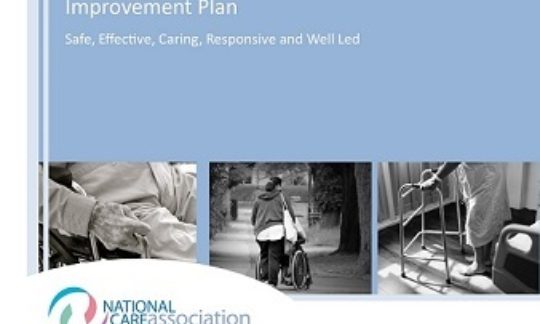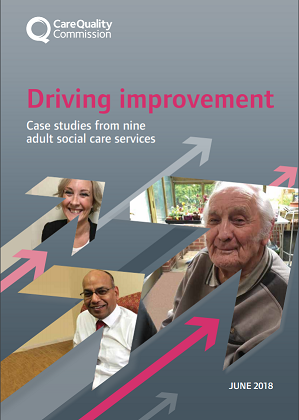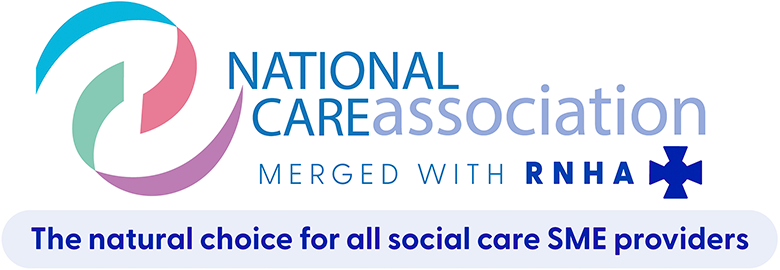19th June 2018
NCA précis of the ‘Top Tips’ from CQC ‘Driving Improvement’ Case Studies

Below is a concise summary of top tips to drive improvement.
Ask yourself 'do you have the following in place'?
The report and resources links below will help if you don’t.
(Produced after reviewing CQC’s Driving improvement report published June 2018, which looks at nine care services' journeys' from an inadequate to a good rating.)
1. Good management is key, with a robust visible leadership team that is able to...
- Listen and communicate well
- with staff
- other professionals
- balancing being a good listener with tightening up on policies
- to empower the team and engage with staff
- don’t be afraid of asking for advice or think that you can do it all yourself
- Understand risks and how to reduce them by
- ensuring the paperwork and processes are in place to monitor what’s happening and use this to make improvements
- Consistent audit and compliance checks are carried out and issues are dealt with
- High standards of discipline
- Lead the team with a clear improvement plan and a vision of what needs to be achieved
- You can’t fix it overnight, so focus on the long term.
- When solving issues always think about how the changes can be maintained
- Make decisions quickly
- Keep it simple
- Don’t be afraid to go back to the drawing board
- Be prepared to work very, very hard…it will normalise but you need to put in the hours to start with.
- Find a way to eliminate the gap between the board and the floor, so that people who lead the business reflect what’s going on at the front line
- Don’t put a rosy tint on the situation – be transparent
2. Have a no blame, open and honest culture, where staff, people using services and their families and carers feel comfortable and supported to...
- talk and be free thinkers
- give them the opportunity to express their views and ideas
- Take risks and get on board to be involved with the ‘change’ journey
- never be frightened to let people make a decision. If it didn’t go well talk about it afterwards
- empowered to make changes based on their knowledge of the people they work with
- feedback - from residents and relatives is vital
- Be brave and make decisions about who isn’t willing/able to come on the journey
3. Get care plans person-centred with all the necessary information and have the right number of staff to deliver person-centred care.
- Ensure that people are looked at as individuals and not as a group. Although they are all living under one roof, residents are all different and people’s wishes and aspirations will change over time
4. Staff should understand their roles and responsibilities thoroughly with regular supervision and training being a priority:
- having training to put customers at ease
- to embed good practice within the staff team
5. Working with partners
- Work with the local Safeguarding Team and ensure your safeguarding processes are robust
Use the resources below to help you plan, implement and record changes to drive improvement.

NCA's Improvement Plan
The Improvement Plan template includes all the overarching questions from the CQC KLOEs prompts. We have provided this document in an editable Word format for easy use within your care home.
The Improvement Plan can be used in inspections to demonstrate how you have improved the quality of your service and/or your plans to maintain your good/outstanding rating. The Improvement Plan needs to be used in conjunction with the CQC KLOE document which can be found on the CQC website.
To download the template please login to the members area of our website and go to 'Toolkits and member downloads'

The resource is a collection of nine case studies telling the stories of adult social care services that have improved from a rating of inadequate and/or enforcement action to a rating of good.
The case studies explore how the services reacted to the initial rating, what they did to turn things around and what they learnt through the process. At the end of each case study the manager has shared their top tips for improvement – practical ideas that other services looking to improve could implement themselves.
The resource reflects the wide range of services and people involved in the adult social care sector. We visited home care agencies, nursing homes and residential homes, with specialisms for supporting people with different needs. We developed the case studies through interviews with a range of people at each service: people who use services and their families, registered managers, providers and owners, care staff, administrative and other staff, commissioners and social workers.














